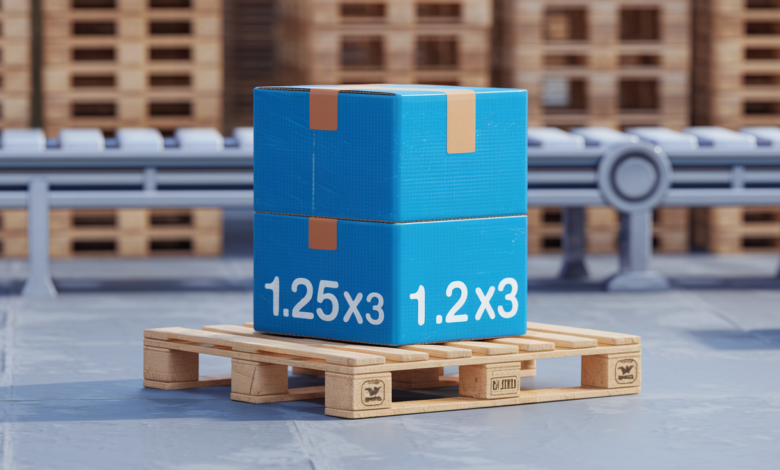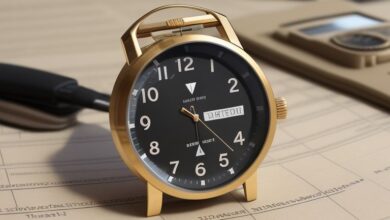What is 1.25×1.2×3? A Simple Guide to These Powerful Numbers

1.25×1.2×3 might look like just numbers at first, but they are actually very important in many industries like building, design, and shipping. If you’ve ever seen these numbers on a box, machine, or drawing, they tell you about length, width, and height. That means 1.25 meters long, 1.2 meters wide, and 3 meters tall. These numbers help people understand how much space something takes or how big it will be. It’s like a secret code to measure things easily!
In this blog post, we will learn how the numbers 1.25×1.2×3 are used in real life. You don’t need to be an engineer to understand this. We’ll keep everything super simple and fun. Whether you’re curious about building, planning your room, or just love numbers, this post is for you.
When you look at something big like a room, a box, or a piece of furniture, the first thing to ask is: How big is it? This is where 1.25×1.2×3 comes in. These three numbers are like the recipe for size. The first number (1.25) is the length, the second (1.2) is the width, and the last one (3) is the height. So if you’re buying a cabinet or planning a small shed, these numbers tell you how much room it will take. Super helpful, right?
Also, in construction, these sizes are often picked for very smart reasons. Maybe 1.25 meters is perfect for walking space, or 1.2 meters fits just right in a corner. Even the 3 meters might match how high a ceiling goes! These numbers are not just random – they are chosen for a reason. By the end of this post, you’ll understand where you see 1.25×1.2×3 in everyday life, why these numbers matter, and how to use them to make good choices.
Understanding 1.25×1.2×3: What Do These Measurements Really Mean?
When you see the numbers 1.25×1.2×3, they are telling you about three important things: length, width, and height. These numbers mean that something is 1.25 meters long, 1.2 meters wide, and 3 meters high. It’s just like describing a box or a room. Think of it like measuring your toy box or small cupboard. These kinds of measurements are used everywhere—in homes, shops, and even big factories. They help people know how much space something will take or if it will fit in a room. Understanding these numbers is not hard. Once you know what each part means, you can start to see why they matter when planning or buying anything. It’s really like learning the language of size!
Why 1.25×1.2×3 is a Perfect Size in Building and Design
1.25×1.2×3 is a size that works really well in many building plans. Builders like using these numbers because they fit nicely into spaces. For example, 1.25 meters is a good size for a walking path or small wall. 1.2 meters might fit perfectly in a corner or between two rooms. The 3-meter height is also great because it matches the usual height of a room. These sizes are easy to carry, stack, and use. In design, smart sizes save time and money. They also make buildings look clean and organized. That’s why you’ll see these numbers again and again in blueprints or design guides. Even if you’re not a builder, knowing why this size works makes planning easier and more fun!
Real-Life Examples of 1.25×1.2×3 in Daily Life
You might not notice it, but 1.25×1.2×3 is around us more than you think! This size can be found in small storage units, cabinets, and even in some fridges or machines. If you visit a warehouse, you might see boxes stacked in these exact sizes. It’s also common in furniture design—some bookshelves and standing wardrobes use this format. In schools and offices, display boards or equipment often follow similar sizes for easy fitting. Even in shipping, many containers or crates are made in this size to fit trucks better. When things are built to the same size, they’re easier to move, store, and fit into spaces. So yes, this number combo is more useful than it looks—especially when you’re organizing space.
How to Use 1.25×1.2×3 for Your Home Projects
Planning a home project? Then 1.25×1.2×3 might come in handy! Let’s say you’re building a storage cabinet, a garden box, or even a small outdoor shed. This size is easy to work with and gives you enough space without being too big. It’s also great for measuring floor plans. You can use tape and chalk to mark these dimensions on your floor to see how much room it takes. Want to design a pet house, laundry unit, or tool shelf? Try starting with these numbers—it often fits well. Many people use this size because it’s small enough to manage but big enough to store things. When you understand how to use it, home DIY becomes fun, safe, and easier to measure!
1.25×1.2×3 in Construction: Small Size, Big Impact
In the construction world, size really matters. 1.25×1.2×3 may sound small, but it can be super helpful. These measurements are often used in concrete blocks, foundation molds, and even for framing certain sections of a building. Because they are simple, they help save time when cutting or shaping materials. They’re also very easy to lift and move around, which helps construction workers do their job faster. Also, when every part of a building follows a smart size like this, it reduces waste. Builders don’t need to throw away extra material, and that saves money too! So even though 1.25×1.2×3 is not very large, it plays a big part in making buildings strong, clean, and quick to build from the ground up.
Converting 1.25×1.2×3 into Feet, Inches, and Other Units Easily
If you’re not used to meters, don’t worry! Converting 1.25×1.2×3 into feet and inches is easier than it sounds. One meter is about 3.28 feet. So, 1.25 meters is around 4.1 feet, 1.2 meters is about 3.94 feet, and 3 meters is almost 9.84 feet. These numbers help you understand if something will fit in your room, car, or closet. You can also use tools like Google or a calculator to change the measurements anytime. Some measuring tapes even show both meters and feet! Knowing both systems is very helpful, especially when shopping online or reading manuals from other countries. So, once you convert 1.25×1.2×3, you’ll feel more confident measuring and buying items that actually fit your space.
Tips to Plan Space Using 1.25×1.2×3 Measurements
Planning space with 1.25×1.2×3 is fun and easy if you follow a few tips. First, always measure the place where you want to put the item. Use chalk or tape to draw it out so you can “see” it on the floor. This helps you feel the size in real life. Second, think about what will go around it—can you walk around it? Will doors open fully? Third, try using graph paper or simple room planning apps to test the fit. If you’re stacking things, make sure the 3-meter height isn’t too tall for your ceiling. These small tricks make a big difference and help avoid costly mistakes. Always plan twice and buy once—it’s the smart way to use 1.25×1.2×3 the right way!
Tools That Help You Measure 1.25×1.2×3 Accurately
Measuring things the right way is very important. Luckily, there are many tools that can help you measure 1.25×1.2×3 correctly and easily. The first tool you should try is a measuring tape with meters and feet. Digital laser measurers are also cool—they tell you the exact size with a button. For drawings, you can use a ruler or scale that matches building plans. If you’re working outside or in a garage, big measuring sticks or wooden scales are handy. There are also free apps for your phone that let you point your camera and get sizes! These tools are great for checking if your space fits 1.25×1.2×3 without guessing. So don’t just guess—use tools to be sure and save time!
Can You Fit a 1.25×1.2×3 Item in Your Car or Room? Let’s Find Out!
Wondering if something that’s 1.25×1.2×3 will fit in your room or car? Let’s check! First, look at the car’s trunk or door. Most car trunks are smaller than 3 meters long, so a 3-meter item might not fit unless the back seats fold. For small vans or pickups, yes—it may fit if loaded carefully. For rooms, measure the floor space and ceiling height. Many homes have 2.5 to 3-meter ceilings, so 3 meters might just reach the top! Always leave some space around the item for air and safety. You can also fold the seats or use roof racks. So, fitting 1.25×1.2×3 depends on how and where you place it, but with good planning, it’s totally possible!
Common Mistakes When Using 1.25×1.2×3 and How to Avoid Them
Many people make simple mistakes when using 1.25×1.2×3, but you can avoid them easily! First, don’t forget to measure your space before buying or building. Guessing can cause big problems. Second, always check if the height (3 meters) will fit through your doors or into your room. Third, don’t mix up meters with feet—it can lead to wrong sizes. Also, remember to leave extra space for wires, movement, or doors to open. Some people also forget about weight—items this size can be heavy! Lastly, make sure to plan how to move the item once it’s built. Will it fit in the elevator or up the stairs? With a little planning and smart measuring, you can avoid all these mistakes easily.
Conclusion
Now you know what 1.25×1.2×3 means and why it’s super useful. These numbers help you plan better, build smarter, and save space. It’s just like a magic code for size! You can use it in your home, garden, or even when shopping online.
Always remember to measure before buying anything. If you know how big something is, you won’t make mistakes. Planning with 1.25×1.2×3 is easy, fun, and smart. Try it in your next project and see how much better things fit!
FAQs
Q: What does 1.25×1.2×3 mean?
A: It means something is 1.25 meters long, 1.2 meters wide, and 3 meters high.
Q: Where is 1.25×1.2×3 used?
A: It is used in building, storage, design, and even furniture sizes.
Q: Can 1.25×1.2×3 fit in a small car?
A: Maybe not. The 3-meter height is too big for most small cars, but it can fit in a van.
Q: Is it hard to measure 1.25×1.2×3 at home?
A: No! You can use a measuring tape or phone app to check the size.
Q: Do I need to be an expert to use these sizes?
A: Not at all! Anyone can learn to use 1.25×1.2×3 with a little practice.



